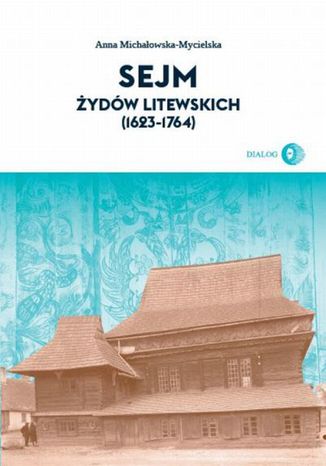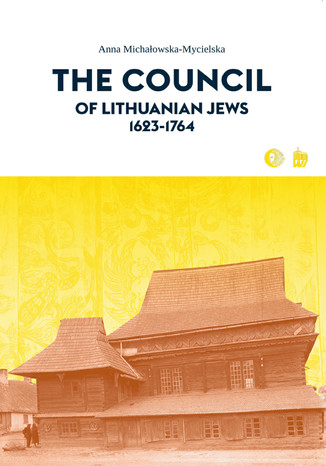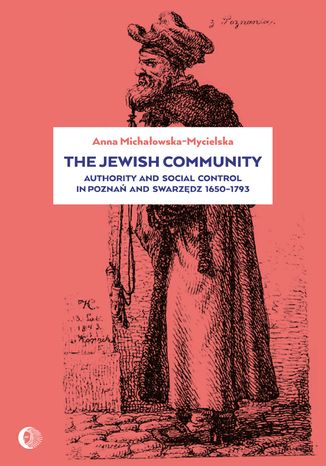Categories
-
- Bitcoin
- Businesswoman
- Coaching
- Controlling
- E-business
- Economy
- Finances
- Stocks and investments
- Personal competence
- Computer in the office
- Communication and negotiation
- Small company
- Marketing
- Motivation
- Multimedia trainings
- Real estate
- Persuasion and NLP
- Taxes
- Social policy
- Guides
- Presentations
- Leadership
- Public Relation
- Reports, analyses
- Secret
- Social Media
- Sales
- Start-up
- Your career
- Management
- Project management
- Human Resources
-
- Architektura i wnętrza
- Health and Safety
- Biznes i Ekonomia
- Home and garden
- E-business
- Ekonomia i finanse
- Esoterecism
- Finances
- Personal finance
- Business
- Photography
- Computer science
- HR & Payroll
- For women
- Computers, Excel
- Accounts
- Culture and literature
- Scientific and academic
- Environmental protection
- Opinion-forming
- Education
- Taxes
- Travelling
- Psychology
- Religion
- Agriculture
- Book and press market
- Transport and Spedition
- Healthand beauty
-
- Office applications
- Data bases
- Bioinformatics
- IT business
- CAD/CAM
- Digital Lifestyle
- DTP
- Electronics
- Digital photography
- Computer graphics
- Games
- Hacking
- Hardware
- IT w ekonomii
- Scientific software package
- School textbooks
- Computer basics
- Programming
- Mobile programming
- Internet servers
- Computer networks
- Start-up
- Operational systems
- Artificial intelligence
- Technology for children
- Webmastering
-
- Antology
- Ballade
- Biographies and autobiographies
- For adults
- Dramas
- Diaries, memoirs, letters
- Epic, epopee
- Essay
- Fantasy and science fiction
- Feuilletons
- Work of fiction
- Humour and satire
- Other
- Classical
- Crime fiction
- Non-fiction
- Fiction
- Mity i legendy
- Nobelists
- Novellas
- Moral
- Okultyzm i magia
- Short stories
- Memoirs
- Travelling
- Narrative poetry
- Poetry
- Politics
- Popular science
- Novel
- Historical novel
- Prose
- Adventure
- Journalism, publicism
- Reportage novels
- Romans i literatura obyczajowa
- Sensational
- Thriller, Horror
- Interviews and memoirs
-
- Archeology
- Bibliotekoznawstwo
- Cinema studies
- Philology
- Polish philology
- Philosophy
- Finanse i bankowość
- Geography
- Economy
- Trade. World economy
- History and archeology
- History of art and architecture
- Cultural studies
- Linguistics
- Literary studies
- Logistics
- Maths
- Medicine
- Humanities
- Pedagogy
- Educational aids
- Popular science
- Other
- Psychology
- Sociology
- Theatre studies
- Theology
- Economic theories and teachings
- Transport i spedycja
- Physical education
- Zarządzanie i marketing
-
- Health and Safety
- History
- Road Code. Driving license
- Law studies
- Healthcare
- General. Compendium of knowledge
- Academic textbooks
- Other
- Construction and local law
- Civil law
- Financial law
- Economic law
- Economic and trade law
- Criminal law
- Criminal law. Criminal offenses. Criminology
- International law
- International law
- Health care law
- Educational law
- Tax law
- Labor and social security law
- Public, constitutional and administrative law
- Family and Guardianship Code
- agricultural law
- Social law, labour law
- European Union law
- Industry
- Agricultural and environmental
- Dictionaries and encyclopedia
- Public procurement
- Management
-
- Africa
- Albums
- Southern America
- North and Central America
- Australia, New Zealand, Oceania
- Austria
- Asia
- Balkans
- Middle East
- Bulgary
- China
- Croatia
- The Czech Republic
- Denmark
- Egipt
- Estonia
- Europe
- France
- Mountains
- Greece
- Spain
- Holand
- Iceland
- Lithuania
- Latvia
- Mapy, Plany miast, Atlasy
- Mini travel guides
- Germany
- Norway
- Active travelling
- Poland
- Portugal
- Other
- Przewodniki po hotelach i restauracjach
- Russia
- Romania
- Slovakia
- Slovenia
- Switzerland
- Sweden
- World
- Turkey
- Ukraine
- Hungary
- Great Britain
- Italy
-
- Philosophy of life
- Kompetencje psychospołeczne
- Interpersonal communication
- Mindfulness
- General
- Persuasion and NLP
- Academic psychology
- Psychology of soul and mind
- Work psychology
- Relacje i związki
- Parenting and children psychology
- Problem solving
- Intellectual growth
- Secret
- Sexapeal
- Seduction
- Appearance and image
- Philosophy of life
-
- Bitcoin
- Businesswoman
- Coaching
- Controlling
- E-business
- Economy
- Finances
- Stocks and investments
- Personal competence
- Communication and negotiation
- Small company
- Marketing
- Motivation
- Real estate
- Persuasion and NLP
- Taxes
- Social policy
- Guides
- Presentations
- Leadership
- Public Relation
- Secret
- Social Media
- Sales
- Start-up
- Your career
- Management
- Project management
- Human Resources
-
- Antology
- Ballade
- Biographies and autobiographies
- For adults
- Dramas
- Diaries, memoirs, letters
- Epic, epopee
- Essay
- Fantasy and science fiction
- Feuilletons
- Work of fiction
- Humour and satire
- Other
- Classical
- Crime fiction
- Non-fiction
- Fiction
- Mity i legendy
- Nobelists
- Novellas
- Moral
- Okultyzm i magia
- Short stories
- Memoirs
- Travelling
- Poetry
- Politics
- Popular science
- Novel
- Historical novel
- Prose
- Adventure
- Journalism, publicism
- Reportage novels
- Romans i literatura obyczajowa
- Sensational
- Thriller, Horror
- Interviews and memoirs
-
- Philosophy of life
- Interpersonal communication
- Mindfulness
- General
- Persuasion and NLP
- Academic psychology
- Psychology of soul and mind
- Work psychology
- Relacje i związki
- Parenting and children psychology
- Problem solving
- Intellectual growth
- Secret
- Sexapeal
- Seduction
- Appearance and image
- Philosophy of life
Sejm Żydów litewskich (1623-1764)
Sejm Żydów litewskich (waad litewski) był centralną reprezentacją żydowską na terenie Wielkiego Księstwa Litewskiego. Działał przez prawie półtora wieku (1623-1764), a jego aktywność dotyczyła wszystkich sfer życia społeczeństwa żydowskiego. Podejmował szeroko zakrojone działania na rzecz ogółu Żydów litewskich na sejmach i sejmikach szlacheckich, na dworze królewskim, w sądach nieżydowskich, na dworach magnackich. Książka pokazuje nie tylko działalność samej instytucji, ale i różnorodne procesy i zjawiska zachodzące wewnątrz społeczeństwa żydowskiego, a także funkcjonowanie Żydów jako odrębnej grupy stanowej, kierującej się poczuciem wspólnoty ponadlokalnej. Anna Michałowska-Mycielska jest pracownikiem Instytutu Historycznego Uniwersytetu Warszawskiego. Zajmuje się historią i kulturą Żydów w dawnej Rzeczypospolitej. Opublikowała książki: "Między demokracją a oligarchią. Władze gmin żydowskich w Poznaniu i Swarzędzu (od połowy XVII do końca XVIII wieku)", Warszawa 2000; "Gminy żydowskiew dawnej Rzeczypospolitej. Wybór tekstów źródłowych", Warszawa 2003; "Pinkas kahału swarzędzkiego (1734-1830)", Warszawa 2005; "Sejmy i sejmiki koronne wobec Żydów. Wybór tekstów źródłowych", Warszawa 2006; "The Jewish Community. Authority and Social Control in Poznań and Swarzędz 1650-1793", Wrocław 2008.
The Council of Lithuanian Jews 1623-1764
The Council of Lithuanian Jews (Lithuanian Vaad) was the central representative organ of the Jews in the Grand Duchy of Lithuania. It operated for nearly one and a half centuries (1623-1764), touching all spheres of the Jewish community's life. It undertook important initiatives for the benefit of its constituency at diets and dietines (legislative assemblies of the nobility), at the courts of the King and important magnates, and in non-Jewish courts of law. This book discusses the Council's activities in the context of processes and phenomena present in Jewish society of the time, illustrating the life of Lithuanian Jewry as a separate estate guided by a common sense of identity transcending local affiliation.
The Jewish Community: Authority and Social Control in Poznan and Swarzedz 1650-1793
Książka - napisana przede wszystkim na podstawie źródeł żydowskich, przeważnie w języku hebrajskim - stanowi cenny wkład w badania nad dziejami Żydów w Polsce. Na przykładzie gmin w Poznaniu i Swarzędzu pokazuje mechanizmy funkcjonowania i politykę władz gminy żydowskiej w epoce nowożytnej w okresie między zakończeniem wojen szwedzkich a schyłkiem Rzeczypospolitej. Szczegółowy opis oraz analiza struktury władz gminnych, sposobu ich wyłaniania i funkcjonowania pozwala nie tylko zrozumieć, jak gminy funkcjonowały, ale także jakie przyczyny prowadziły do zmian. This book features the mechanisms underlying the operation of Jewish communities and the policies pursued by community authorities in early modem times. The communities featured are Poznań and Swarzędz. Although authority was mainly exercised in a community by the kahal and its officials, the rabbi, brotherhoods, and craftsmen’s guilds were also involved in the community’s management. The purpose of this work is also to highlight the mutual interdependencies between all of these groups. It is by no means accidental that Wielkopolska (Great Poland) has been chosen as an example. This region, important in demographic and cultural terms, was the area of the earliest Jewish settlement in Polish lands. Jerzy Topolski described Wielkopolska’s unique socioeconomic structure. Agriculture and industry shaped the area’s economy (with the grange catering to the domestic market rather than to exports across the Baltic Sea, with nobility more inclined to invest, with highly developed sheep breeding and textile industry, woolen cloth production in particular, and with a high share of urban population, a positive trade balance, and a high share of pecuniary rent in peasants’ performances to their lords). Wielkopolska was mainly inhabited by medium nobility and there were no large magnate estates, typical of the eastern regions of the Polish-Lithuanian Commonwealth. Owing to Wielkopolska’s specificity, the nature of Jewish settlement in this region was distinctly different from that in other regions: Jews mainly settled in towns,taking up such typical urban occupations as trade and crafts. The book predominantly relies on the archival sources produced by two Jewish communities in Wielkopolska – in Poznań and Swarzędz – which are ample and very well preserved compared to those of other Commonwealth’s communities. It also features broader phenomena characteristic of the way the Jewish self-government functioned at the local level. It is also worth underscoring that the state of estates, where individual estates exercised separate rights and were differently organized, was a very good ground for the growth of such self-government. This second English edition of the book is largely due to the unflagging interest in the history and culture of the Polish Jews. That interest is not a mere fad, but a phenomenon that has become a permanent feature of historical writing. There is also a noticeable trend for scholars, who are increasingly better prepared in terms of research tools and language, to focus on that area of study. Which translates into a new perception of the place and role of the Jews without whom the socio-economic landscape of the ancient Commonwealth would have been highly incomplete and sparse. It is becoming more widespread in Poland, too, as evidenced by the emergence of various museums which feature/underscore the presence of Jews in local communities. As the Museum of the History of Polish Jews, recently opened in Warsaw, best demonstrates. The Poznań community is one of the oldest Jewish communities in the Polish lands. The oldest reference to Jews living in Poznań (Pozna) comes from 1379.[1] Legend has it that a synagogue was built in that town in 1367, first referred to in source materials in 1449. The first mention of the cemetery comes from 1438.Another Poznań legend, which most probably dates from the second half of the 15th century, tells about the host profaned by the Poznań Jews in 1399.



